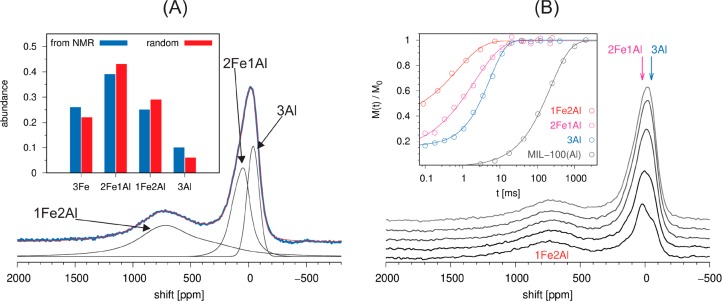Figure 4.
(A) Decomposition of the 27Al NMR spectrum of MIL-100(Al,Fe) into three contributions, presumably belonging to the 2Fe1Al, 1Fe2Al, and 3Al trimers. From the intensities of these contributions, the abundancies of individual trimers within MIL-100(Al,Fe) can be determined. In the inset, these abundancies are compared with those expected for the random incorporation of Fe and Al into the trimers. (B) 27Al spin–lattice relaxation time analysis of MIL-100(Al,Fe). The spectra recorded with different relaxation delays clearly indicate that the contribution resonating between −150 and 250 ppm is composed of at least two signals. The inset shows that the three partly resolved signals have significantly different spin–lattice relaxation rates, all substantially higher than the relaxation rate of the diamagnetic MIL-100(Al).

